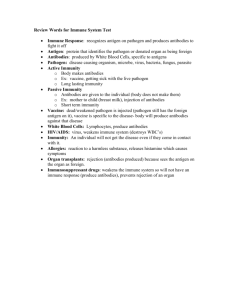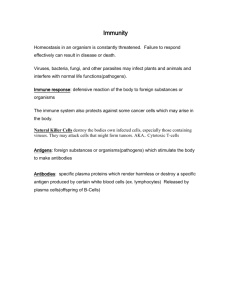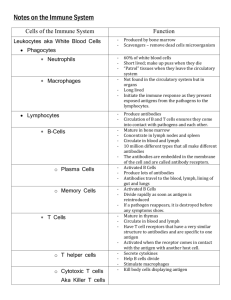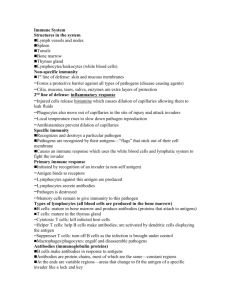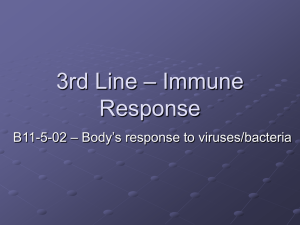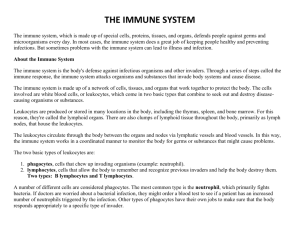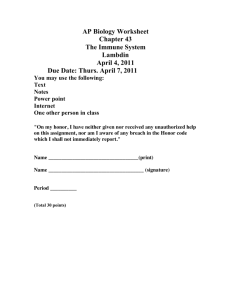Immune System
advertisement
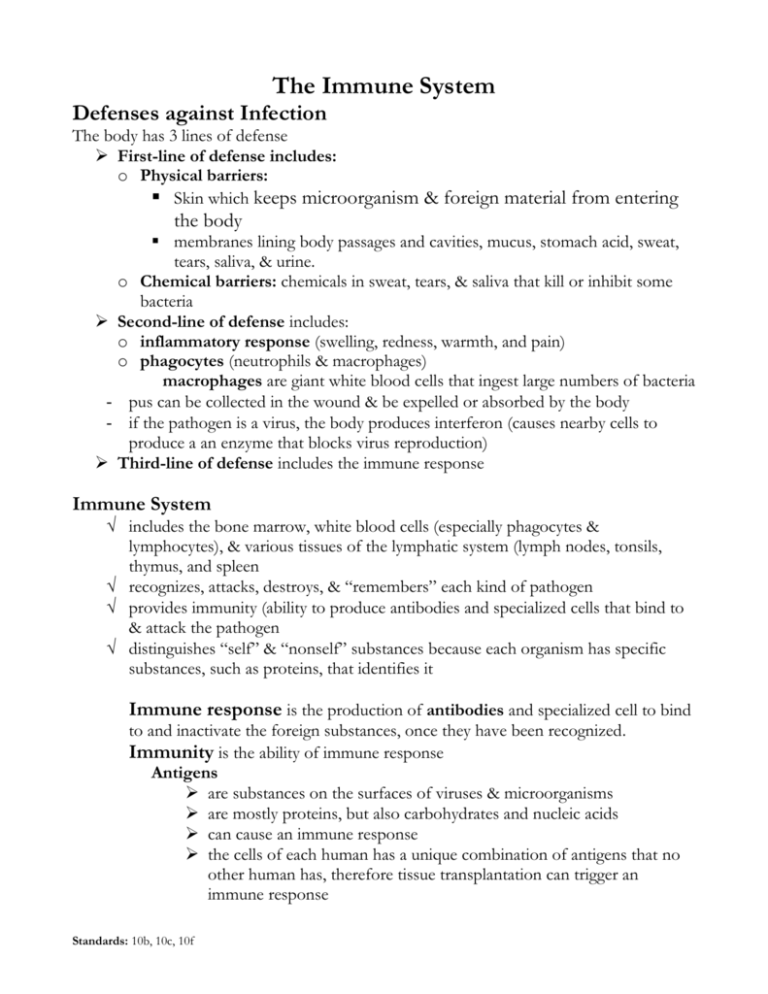
The Immune System Defenses against Infection The body has 3 lines of defense First-line of defense includes: o Physical barriers: Skin which keeps microorganism & foreign material from entering the body membranes lining body passages and cavities, mucus, stomach acid, sweat, tears, saliva, & urine. o Chemical barriers: chemicals in sweat, tears, & saliva that kill or inhibit some bacteria Second-line of defense includes: o inflammatory response (swelling, redness, warmth, and pain) o phagocytes (neutrophils & macrophages) macrophages are giant white blood cells that ingest large numbers of bacteria pus can be collected in the wound & be expelled or absorbed by the body if the pathogen is a virus, the body produces interferon (causes nearby cells to produce a an enzyme that blocks virus reproduction) Third-line of defense includes the immune response Immune System √ includes the bone marrow, white blood cells (especially phagocytes & lymphocytes), & various tissues of the lymphatic system (lymph nodes, tonsils, thymus, and spleen √ recognizes, attacks, destroys, & “remembers” each kind of pathogen √ provides immunity (ability to produce antibodies and specialized cells that bind to & attack the pathogen √ distinguishes “self” & “nonself” substances because each organism has specific substances, such as proteins, that identifies it Immune response is the production of antibodies and specialized cell to bind to and inactivate the foreign substances, once they have been recognized. Immunity is the ability of immune response Antigens are substances on the surfaces of viruses & microorganisms are mostly proteins, but also carbohydrates and nucleic acids can cause an immune response the cells of each human has a unique combination of antigens that no other human has, therefore tissue transplantation can trigger an immune response Standards: 10b, 10c, 10f Lymphocytes cells in the immune system recognize specific antigens and either produce antibodies or kill foreign cells two types produced in the bone marrow B lymphocytes or B cells mature in bone marrow - produce antibodies T lymphocytes or T cells mature in the thymus - attack foreign cells directly Both recognize different antigens Primary Immune Response - body response when the antigen enters that body for the first time - during the first 5 days no measurable amounts of antibodies or specialized cells - 10-15 days there is a gradual rise in the levels of antibodies or specialized cells Secondary Immune Response - body response when the same antigen enters the body another time - within 1-2 days after infection there are high levels of antibodies & specialized cells B Cells & Antibodies (figure 10-9) Complement system – enzymes in the blood that burst bacterial cells T Cells & Immunity (figure 10-9) Two types of Immunity 1. Active Immunity - the body produces its own antibodies or killer T cells. - develops as the result of having had the disease - may also developed through the use of a vaccine Vaccines consist of dead or weakened bacteria or viruses or modified poisons 2. Passive Immunity - antibodies obtained from the blood of either another person or an animal - temporary & only lasts for less than a month because the body destroys the borrowed antibodies ex.) maternal immunity = antibodies from the mother enter the baby’s blood before birth. Antibodies are also present in the mother’s milk Standards: 10b, 10c, 10f

